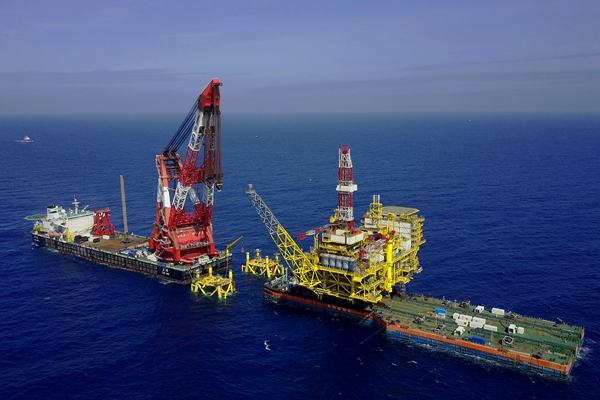We all know that metal products are prone to corrosion in the ocean, on the one hand, because the seawater is corrosive, on the other hand, Marine microorganisms, attached organisms and their metabolites have a direct or indirect acceleration effect on the corrosion process. So how many kinds of ocean corrosion are there?
First, Marine corrosion
The corrosion of components in Marine environment mainly includes uniform corrosion, pitting corrosion, crevice corrosion, turbulent corrosion, cavitation corrosion, galvanic corrosion and corrosion fatigue, etc. The occurrence of these corrosion phenomena is often related to the structure and process of metal components.
Second, uniform corrosion
Uniform corrosion is corrosion that occurs at almost the same rate on a metal surface, as opposed to comprehensive corrosion in any form that occurs on a metal surface. Uniform corrosion generally occurs in the cathode region and the anode region is difficult to distinguish the place.
Third, pitting corrosion
The occurrence of deep corrosion in local areas of the metal surface is called pitting corrosion, while no obvious corrosion occurs in the rest of the metal. Pitting corrosion has the characteristics of "deep digging", that is, once the corrosion hole is formed, it often automatically corrodes deep, so it has great destructive power and hidden disease. Pitting is not only related to the dispersion of salt particles or pollutants in the environment, but also to the surface state of the material itself and the treatment process.
Fourth, gap corrosion
Parts in the medium, due to the formation of a particularly small gap between the metal and the metal (or non-metal), so that the medium in the gap is in a stagnant state and cause accelerated corrosion of the metal in the joint, this local corrosion is called gap corrosion. The corrosion is most severe in ocean splash zones and full immersion zones, and is also found in the Marine atmosphere. Crevice corrosion occurs in almost all metals and alloys.
Five, turbulent corrosion
In some specific parts of the component, the turbulence caused by the rapid increase of the velocity of the medium is called turbulent corrosion. Many metals such as steel, copper, cast iron, etc. are very sensitive to speed, and rapid erosion occurs when the speed is above a certain critical value. Turbulent corrosion is often accompanied by cavitation corrosion, and sometimes the two are even difficult to distinguish. Impact corrosion also belongs to the category of turbulent corrosion, which refers to the mechanical damage of high-speed fluid and electrochemical corrosion of these two effects on metal damage results.
Six, cavitation corrosion
When a fluid moves relative to a metal member at high speed. Eddy currents are generated in local areas of the metal surface, accompanied by the rapid formation and collapse of bubbles on the metal surface, showing damage characteristics similar to pitting corrosion, and the abrasion produced under such conditions is called cavitation corrosion, also known as cavity corrosion or cavitation corrosion. This kind of corrosion is mostly honeycomb, which is the result of electrochemical corrosion and mechanical damage caused by bubble bursting.
Seven, galvanic corrosion
Galvanic corrosion is corrosion caused by the action of one metal with another metal or electronic conductor forming a corrosive battery. When two different metals are connected and exposed to the Marine environment, severe galvanic corrosion usually occurs. The severity of galvanic corrosion mainly depends on the relative difference of the potential sequence and the relative area of the two metals in seawater, but also depends on the polarization of the metals. The galvanic corrosion can be controlled or inhibited by adding an insulating layer at the joint of two metals or by covering the galvanic cathode with an insulating protective coating.
Article from the network, copyright belongs to the original author, if there is infringement please inform delete

